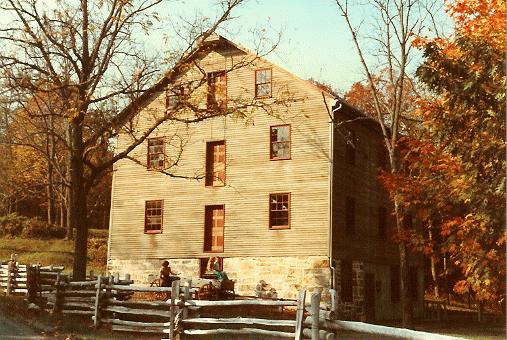
Shoaff's Mill
Perry Co. | Pennsylvania | USA
Watersource: Little Buffalo Creek.
Shoaff's Mill
From Pa 849, 0.05 miles south of Newport, PA., take Pa 34 east for 0.05 miles. Make a right turn on Sr 4010 and procede for 3.5 miles to Sr 1011. Turn left into Little Buffalo State Park. Follow the signage to the mill.

The first mill on the site prior to 1833, was located slightly west of the present mill. A log mill elevated on wooden post, powered by a wooden overshot wheel to run one set of buhrs. The current mill was built in 1839-40 by James McGowan & John McKeehan.
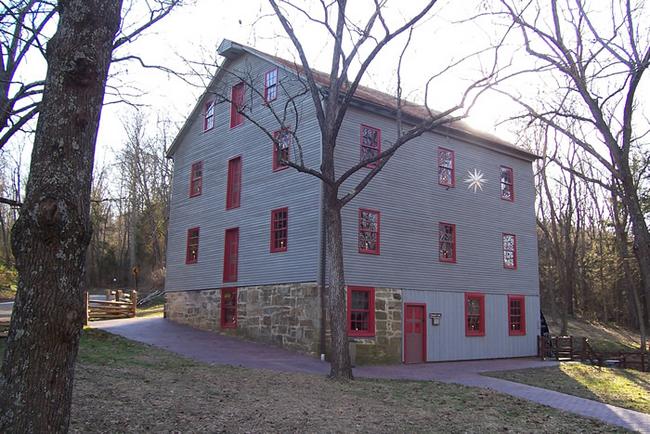
When the Juniata Furnace or Iron Works closed in 1848, William Shoaff bought 63 acres which included the mid 1830's-1840 grist mill and a log cabin. By 1861, the miller had built a new brick, miller's house. This home still remains as a private residence in Little Buffalo State Park. William passed on in 1888 and his widow began to operate the mill. Ellis Shoaff, William's son, bought the mill from his mother in 1900.
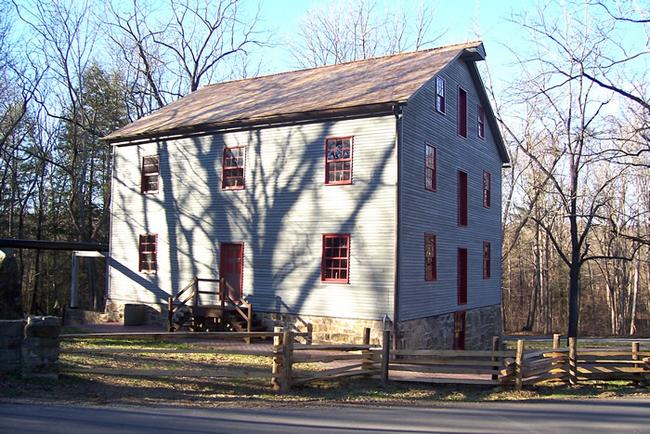
The former 27' wooden waterwheel was replaced by Ellis soon after he took the helm, as the old wheel was in bad condition and could not supply enough power for the new changes Ellis had made in the workings of the mill.
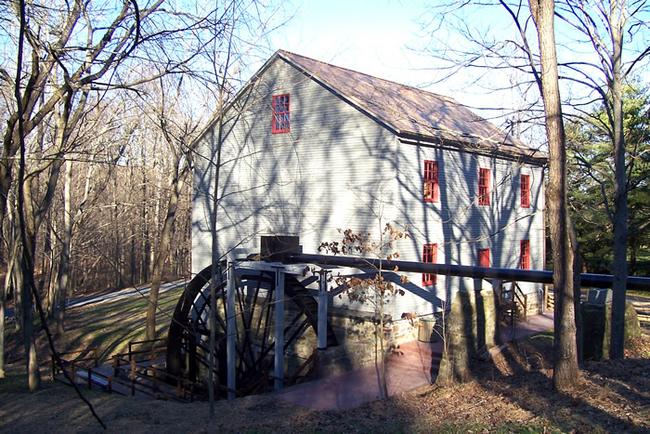
Some of the back wall of the mill was cut off, the old wheel was internal, and the new 32' Fitz steel wheel was fashioned in place, this location now being on the outside of the back of the mill. The wooden water sluice from the millrace was still as it was with the former wheel. The mill ceased operations in 1940, Ellis died in 1944, and Earl, his son, bought the millo in 1946.
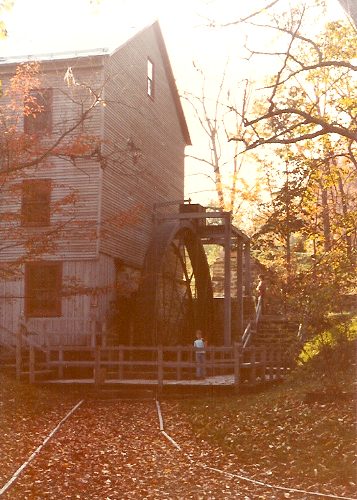
The mill was operated to grind flour, buckwheat flour, cornmeal, and livestock feed. Much of the former jumble of bins, shafts, shutes and machinery were taken out so as to make a safe, working old mill museum. During the 1976 renovation, the wooden sluice was replaced with a steel penstock.
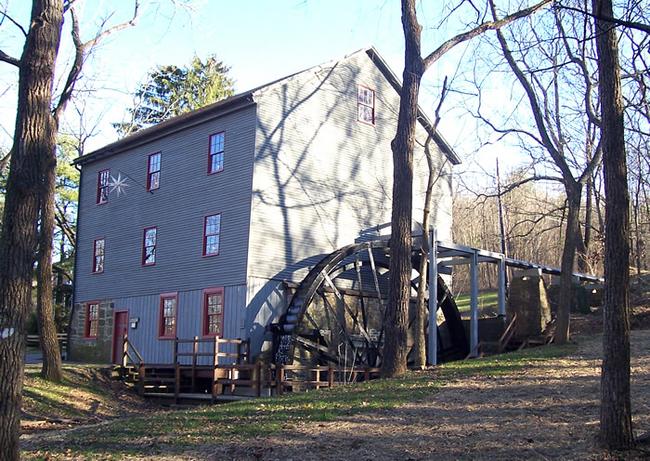
The Commonwealth of Pennsylvania purchased the mill in 1966 from William Shoaff's grandson, Earl, who had lived on the property for 20 years. The mill was renovated to working condition in 1976 and has since been a working museum. The mill now is operable for cornmeal, cracked corn, and grinding apples for pressing into cider.